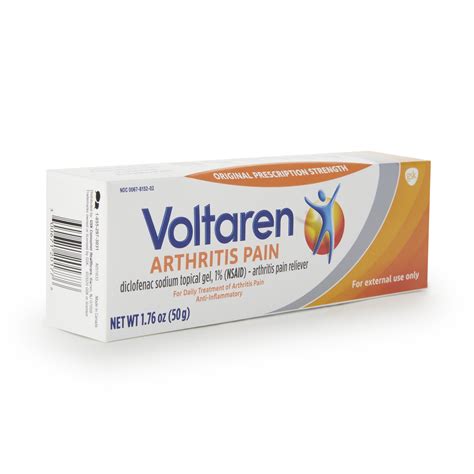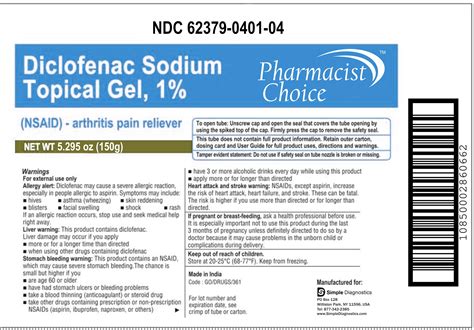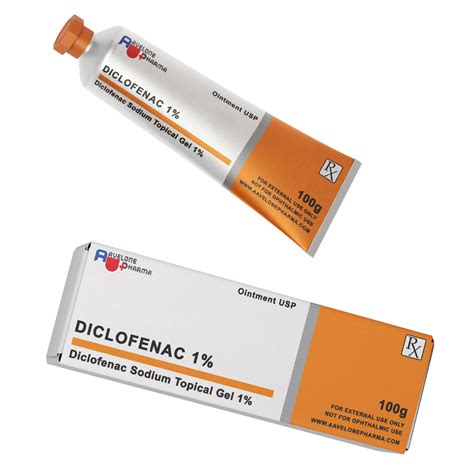Intro
Relieve pain with Diclofenac Sodium Topical Gel 1%, a potent anti-inflammatory gel for joint and muscle pain, reducing swelling and stiffness, offering fast and effective topical pain relief.
The management of pain, particularly in conditions such as osteoarthritis, can be a challenging and complex issue. Millions of people worldwide suffer from joint pain and inflammation, which can significantly impact their quality of life. Among the various treatment options available, topical gels have gained popularity due to their targeted action and reduced risk of systemic side effects. One such medication is Diclofenac Sodium Topical Gel 1%, which has been widely used for its effectiveness in providing relief from pain and inflammation.
The importance of effective pain management cannot be overstated, as it affects not only the physical well-being of an individual but also their mental health and ability to carry out daily activities. Traditional oral pain medications can have gastrointestinal side effects, among others, making topical treatments an attractive alternative for many patients. Diclofenac Sodium Topical Gel 1% is one of the options that have been studied extensively for its safety and efficacy in treating pain associated with osteoarthritis and other conditions.
Understanding how Diclofenac Sodium Topical Gel 1% works and its benefits is crucial for both healthcare providers and patients. This gel contains diclofenac sodium, a nonsteroidal anti-inflammatory drug (NSAID) that, when applied topically, penetrates the skin to reach the site of pain and inflammation. By inhibiting the production of prostaglandins, which are substances in the body that cause pain and inflammation, diclofenac sodium provides relief from symptoms without the systemic side effects associated with oral NSAIDs. This targeted action makes it an appealing option for those seeking to manage their pain effectively while minimizing risks.
Diclofenac Sodium Topical Gel 1%: Mechanism of Action

Diclofenac Sodium Topical Gel 1% works through a mechanism that involves the inhibition of cyclooxygenase (COX) enzymes. These enzymes are responsible for the production of prostaglandins from arachidonic acid. By blocking the COX enzymes, diclofenac sodium reduces the synthesis of prostaglandins, thereby decreasing inflammation and pain. This action is localized to the area of application, reducing the risk of systemic side effects that are commonly associated with oral NSAIDs.
Benefits of Diclofenac Sodium Topical Gel 1%
The benefits of using Diclofenac Sodium Topical Gel 1% are numerous. It provides localized relief from pain and inflammation, making it an ideal treatment for conditions like osteoarthritis of the knees, ankles, feet, elbows, wrists, and hands. The topical application reduces the risk of gastrointestinal side effects, such as stomach ulcers and bleeding, which are significant concerns with oral NSAIDs. Additionally, because it is applied directly to the affected area, it can provide faster relief from pain compared to oral medications that need to be absorbed through the digestive system.Using Diclofenac Sodium Topical Gel 1%: Steps and Precautions

To use Diclofenac Sodium Topical Gel 1% effectively and safely, follow these steps and precautions:
- Apply the gel to clean, dry skin.
- Use the dosing card provided to measure the correct dose.
- Gently rub the gel into the skin until it is no longer visible.
- Wash your hands after applying the gel, unless your hands are the treated area.
- Avoid applying the gel to open wounds, or irritated skin.
- Do not cover the treated area with a bandage or dressing unless instructed by your doctor.
- Avoid using heating pads, because they can increase the absorption of the drug.
Common Side Effects and Interactions
While Diclofenac Sodium Topical Gel 1% is generally well-tolerated, it can cause side effects, including skin irritation at the application site, such as redness, itching, or burning. Less common side effects include headache, dizziness, and stomach upset. It's essential to discuss any medications you are currently taking with your healthcare provider, as diclofenac sodium can interact with other drugs, including blood thinners, lithium, and methotrexate.Diclofenac Sodium Topical Gel 1% vs. Other Pain Relief Options

When comparing Diclofenac Sodium Topical Gel 1% to other pain relief options, several factors come into play, including the type of pain, the severity of symptoms, and the patient's medical history. Oral NSAIDs, such as ibuprofen and naproxen, can provide systemic pain relief but come with a higher risk of gastrointestinal side effects. Topical creams and ointments containing capsaicin or menthol can provide temporary relief from pain but may not be as effective for inflammation. Injectables, like corticosteroids, can offer significant relief but involve invasive procedures and may have systemic effects.
Patient Experiences and Reviews
Patient experiences with Diclofenac Sodium Topical Gel 1% vary, but many report significant relief from pain and inflammation with minimal side effects. Some find it more effective than oral medications, appreciating the localized action and reduced risk of systemic side effects. However, individual results can vary, and what works for one person may not work for another. It's crucial to follow the advice of a healthcare provider and to carefully monitor your response to the medication.Future Directions in Topical Pain Relief

The field of topical pain relief is continually evolving, with research focusing on new formulations and delivery systems that can enhance efficacy and reduce side effects. Nanotechnology, for instance, is being explored for its potential to improve the penetration of topical drugs, including diclofenac sodium, into the skin. Additionally, combination therapies that pair different active ingredients may offer improved outcomes for patients with complex pain conditions.
Challenges and Opportunities
Despite the advancements in topical pain relief, challenges persist, including the need for more effective treatments for severe pain and the development of resistance to current therapies. Opportunities exist in the development of personalized medicine approaches, where treatments are tailored to an individual's specific genetic and environmental factors. Furthermore, the integration of alternative therapies, such as physical therapy and cognitive-behavioral therapy, into treatment plans can offer comprehensive pain management strategies.Conclusion and Recommendations

In conclusion, Diclofenac Sodium Topical Gel 1% is a valuable treatment option for individuals suffering from pain and inflammation associated with osteoarthritis and other conditions. Its localized action and reduced risk of systemic side effects make it an attractive alternative to oral NSAIDs. However, as with any medication, it's crucial to follow the recommended dosage and to discuss any concerns or questions with a healthcare provider.
For those considering Diclofenac Sodium Topical Gel 1%, it's recommended to:
- Consult with a healthcare provider to determine if this treatment is appropriate for your specific condition.
- Carefully follow the application instructions to ensure safe and effective use.
- Monitor your response to the medication and report any side effects or concerns to your healthcare provider.
Final Thoughts
The management of pain is a complex issue that requires a multifaceted approach. Diclofenac Sodium Topical Gel 1% is one tool in the arsenal against pain and inflammation, offering a targeted and relatively safe option for many patients. As research continues to uncover new pathways to pain relief, it's essential for patients and healthcare providers to stay informed about the latest developments and to work together to find the most effective treatment strategies.What is Diclofenac Sodium Topical Gel 1% used for?
+Diclofenac Sodium Topical Gel 1% is used for the relief of pain and inflammation associated with osteoarthritis and other conditions.
How does Diclofenac Sodium Topical Gel 1% work?
+It works by inhibiting the production of prostaglandins, substances in the body that cause pain and inflammation, through the inhibition of cyclooxygenase (COX) enzymes.
What are the common side effects of Diclofenac Sodium Topical Gel 1%?
+Common side effects include skin irritation at the application site, such as redness, itching, or burning. Less common side effects include headache, dizziness, and stomach upset.
We invite you to share your experiences or ask questions about Diclofenac Sodium Topical Gel 1% in the comments below. Your input can help others make informed decisions about their pain management options. Additionally, if you found this article informative, please consider sharing it with others who might benefit from this information. Together, we can work towards better understanding and managing pain for a improved quality of life.
